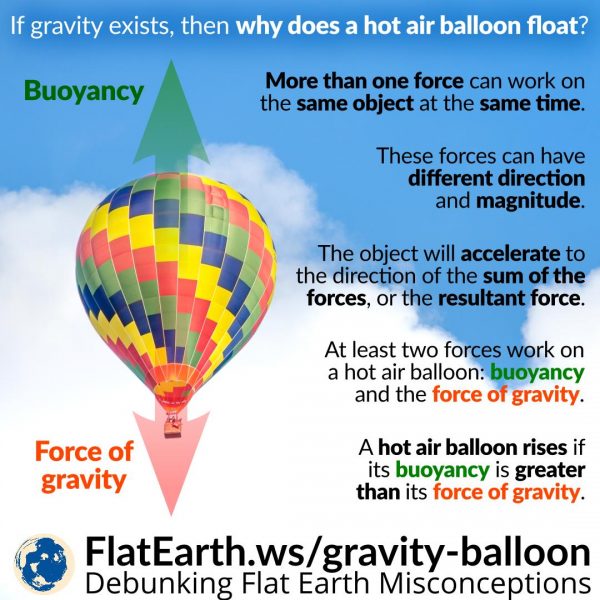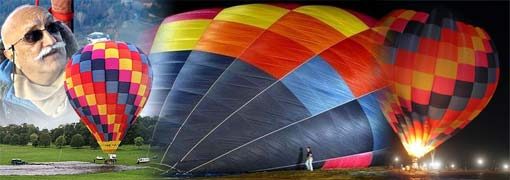Buoyancy Theory Applied In Hotair Balloon
The computer screen of an air traffic controller shows that the traffic in the airspace is as busy as the motor traffic on the streets of any cosmopolitan cities in the world. Jet engines boom round the world in hours. Rockets routinely zoom in space. But it all started off with an unfashionable giant floating gasbag known as a hotair balloon. They are one of the most delightful devices invented, and it is fascinating to watch them fly across the sky. Hotair balloon is the oldest form of aviation. It has been in existence since the 18th century. It is a unique flying craft born out of a concept.
Fundamental scientific principle
Buoyancy theory! The buoyancy theory was introduced by the Greek mathematician Archimedes. It is an upward force the air exerts when heated that defies the force of gravity. According to this principle, the upward resilient force is the same as the weight of the air that is displaced. Hotair balloon is essentially an original application of this fundamental scientific principle. It rises due to the displacement of air. Ever since then, the idea has been gaining momentum. It gave birth not only to hotair balloon but eventually also to a full-fledged aviation industry. Along the way aviation history has witnessed some key moments.
Floating ship explained
An object can float in water by displacing it so that the pressure of the water pushing up beneath it balances its weight. A ship floats because the weight of the ship is less than the water and the pressure of the water that is beneath it counterbalances it. Interestingly, the ship does not float entirely but sinks partly into the water depending on how heavy it is.
Rising ball explained
A hotair balloon float in the air for the same reason that boats or ships float in the sea. Hotair balloons rise due to the pressure of the heat trapped inside the envelope much the same way the water pressure supports the ships. The lighter hot air causes the ball to rise and helps it stay in the air. For this reason, a hotair balloon is capable of lifting a payload into the atmosphere in a nonporous envelope filled with a lifting gas. Warmer air rises because heated air molecules are less dense than the ambient air. Put in another way, the heated air inside the balloon is lighter than an equal volume of the surrounding cold air. In other words, hot air has less mass per unit than the ambient cold air.
Hotair balloon debuts
In 1783, two French brothers, Joseph Michel and Jacques-Etienne Montgolfier discovered that a light bag filled with heated air rose and demonstrated it in France, by developing the first hotair balloon. They used fire made of straw and wood instead of the modern gas burners. And they made the envelope out of linen lined with paper. Five months later, two more Frenchmen, the Marquis d’Arlandes and Francois Pilatre traveled 9km across Paris in a hotair balloon invented by the Montgolfiers. They used heated air and smoke as lifting gas. Little did they know that the age of ballooning and aviation had begun.
Fantasy to flight
Hotair ballooning was first popularized in 1863 when the French author Jules Verne published the novel Five Weeks in a Balloon. Simultaneously, hotair balloons came to be used by countries to spy on enemies. In peacetime, they were used to take aerial photographs. But the early days of aviation lacked access to technology and high-tech materials, and hence hotair balloons could not be steered. Brave pioneers had to use pure ingenuity on a trial and error basis.
Various ballooning purposes
In 1925, Ralph Hazlett Upson, the aviation pioneer developed an improved version with exciting features for making record-breaking voyages. After serious scientific balloon experiments in the late twentieth century, crewed balloon flights even started conducting research in the stratosphere. Today, people use high-altitude balloons for extreme cruises over the mountains and oceans. Other types used are the super-pressure balloon, the zero-pressure balloon, the military tethered balloon, the powered aircraft and the meteorological balloon. In modern times, ballooning is a competitive sport across the globe. And the primary objective of recreation ballooners is to break records.
In recent times
The British businessman Richard Branson and his co-pilot Lindstrand in 1987 became the first people ever to cross the Atlantic Ocean. A dozen years later, Bertrand Piccard and Brian Jones piloted the Breitling Orbiter 3 and flew around the world in an hotair balloon for the first time. Steve Fossett from Australia beat that record in 2002 by circumnavigating the world in a balloon in just 13.5 days. And the Indian Dr. Vijaypat Singhania holds the record for achieving a new altitude of 21,000 meters in 2005. The modern hotair balloon is a far cry from the original design of the Montgolfiers. Innovations centered around improving the burner and deflation system will continue to happen that will allow hotair balloons to fly longer, higher, and under more control. With that, will come more options of models, sizes, and styles to suit various needs and budgets
5 Frequently Asked Questions About Hot-Air Balloon Theory
To book a balloon safari, please fill out the following form or simply email us on safaris@safari-center.com








